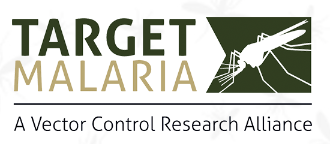Omanyano ovanhu koikundaneki yomalungula kashili paveta, Commisiner Sakaria takunghilile
Veronika Haulenga
Omanyano ovanhu koikundaneki yomalungula kashili paveta, Commisiner Sakaria takunghilile
Veronika Haulenga
Listeners:
Top listeners:
-
play_arrow
Omanyano ovanhu koikundaneki yomalungula kashili paveta, Commisiner Sakaria takunghilile Veronika Haulenga


World Mosquito Day is commemorated every year on the 20th of August, and it is an opportunity to raise awareness on the dangers posed by mosquito-borne diseases and the ongoing efforts to combat the world’s deadliest creature.
Both malaria and dengue are transmitted by female mosquitoes and cause severe illness in humans. Because of some similarities, the two diseases, and mosquito species, are often confused by patients and medical personnel.
“Dengue and malaria are two very different diseases caused by different pathogens and different mosquito species,” says Dr. Charles Guissou, co-Principal Investigator for Target Malaria Burkina Faso at the Institut de Recherche en Sciences de la Santé (IRSS). “Misdiagnosis between malaria and dengue is common and this can then contribute to unappropriate medical care.”
Malaria causes every year 200 million cases worldwide, leading to 600,000 deaths. Most of these deaths happen in Africa where children and pregnant women pay the highest price. The World Health Organisation (WHO) reported that, in 2022, Africa was home to 94% of malaria cases (233 million) and 95% (580 000) of malaria deaths. Children under five accounted for about 78% of all malaria deaths.
The global incidence of dengue has grown significantly in recent decades. Cases reported to WHO increased from 505,430 in 2000 to 6.5 million in 2023.
“At Target Malaria we are committed to contributing to an Africa free of malaria. We also want to be able to educate as many people as possible about the differences between the Anopheles mosquito, which transmits malaria, and the Aedes mosquito that carries the dengue virus. Malaria and dengue should be distinguished from each other so that adequate preventions and treatments can occur,” says Krystal Birungi, Field Entomology Coordinator for Target Malaria Uganda at the Uganda Virus Research Institute (UVRI)
Some of the noteworthy differences between dengue and malaria are below:


“The risk of potential infections is staggering. Approximately 3.9 billion people are at risk of dengue and 3.3 billion people of malaria infections. Innovative, sustainable solutions are needed in the fight against these diseases, especially in Africa. This is why African voices and expertise play a central role in the development and evaluation of these technologies,” adds Birungi.
Target Malaria is pioneering the use of gene drive, a natural genetic mechanism, to spread a genetic modification in malaria mosquitoes that biases the rate of inheritance and affects their ability to reproduce. This innovative approach holds the promise of being a sustainable and cost-effective method to reduce the population of malaria mosquitoes and ultimately halt malaria transmission.
More information on the differences between dengue and malaria can be found here.
Written by: Contributed
Aedes mosquito Africa dengue cases Africa malaria cases Anopheles mosquito dengue dengue statistics Institut de Recherche en Sciences de la Santé IRSS malaria malaria statistics malaria vs dengue mosquito species mosquito-borne diseases Target Malaria World Mosquito Day
Similar posts
Windhoek Weather
Most popular

Mbumba signs off new benefits for retired political office bearers

Namdia Heist: More questions, lots of confusion

Omuhwahwameki Michael okuunganeka oshikonga shoku patitha oostola dho Rani moshilongo ashihe.

Walvis Bay woman loses over N$777.000 to a fraudster

Don’t let Pohamba’s tears over Nujoma’s death go to waste
Copyright 2025 Future Media (Pty) Ltd | Website by Digital Platforms
Tel: +264 83 000 1000 | Email: news@futuremedia.com.na





